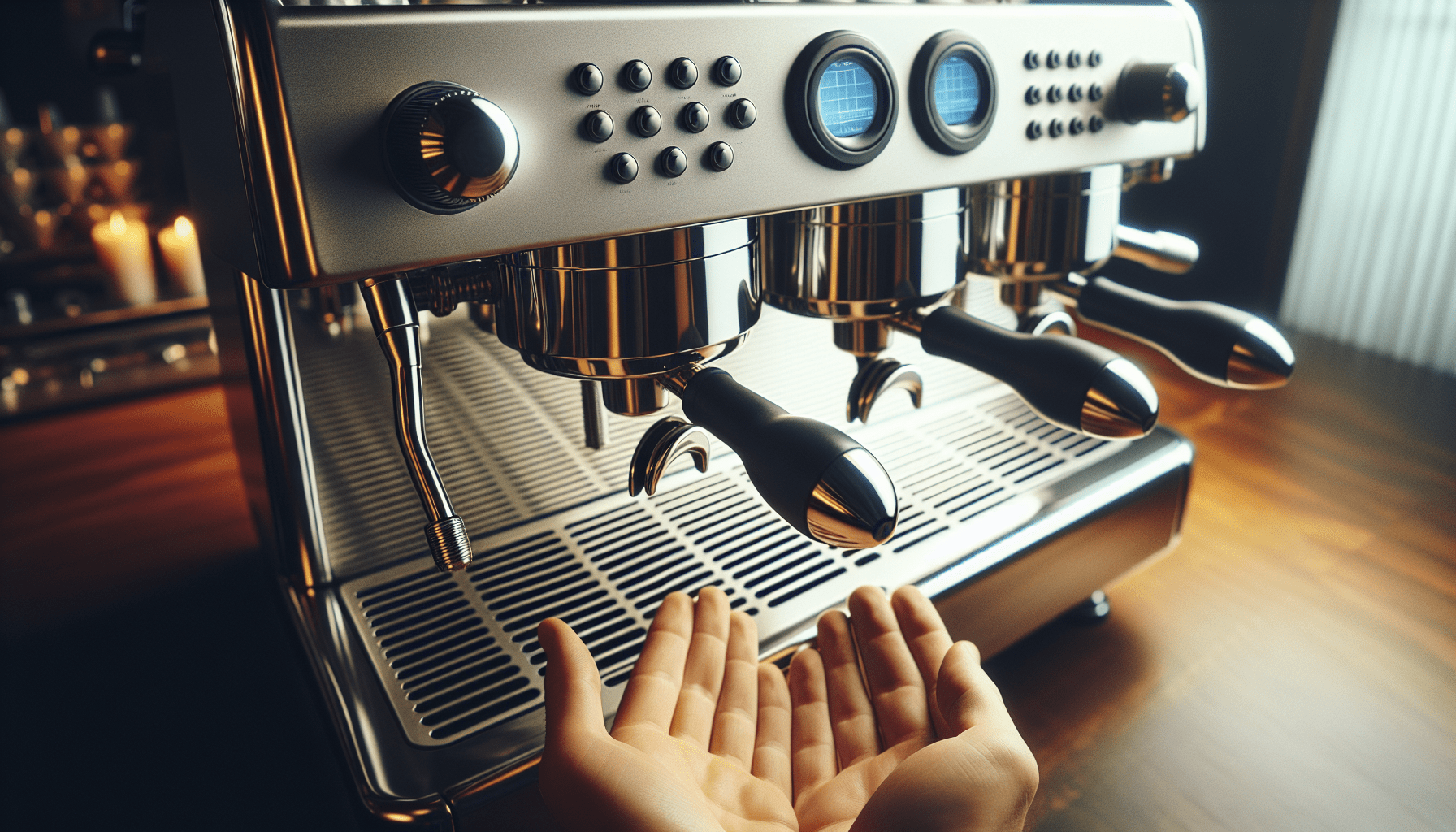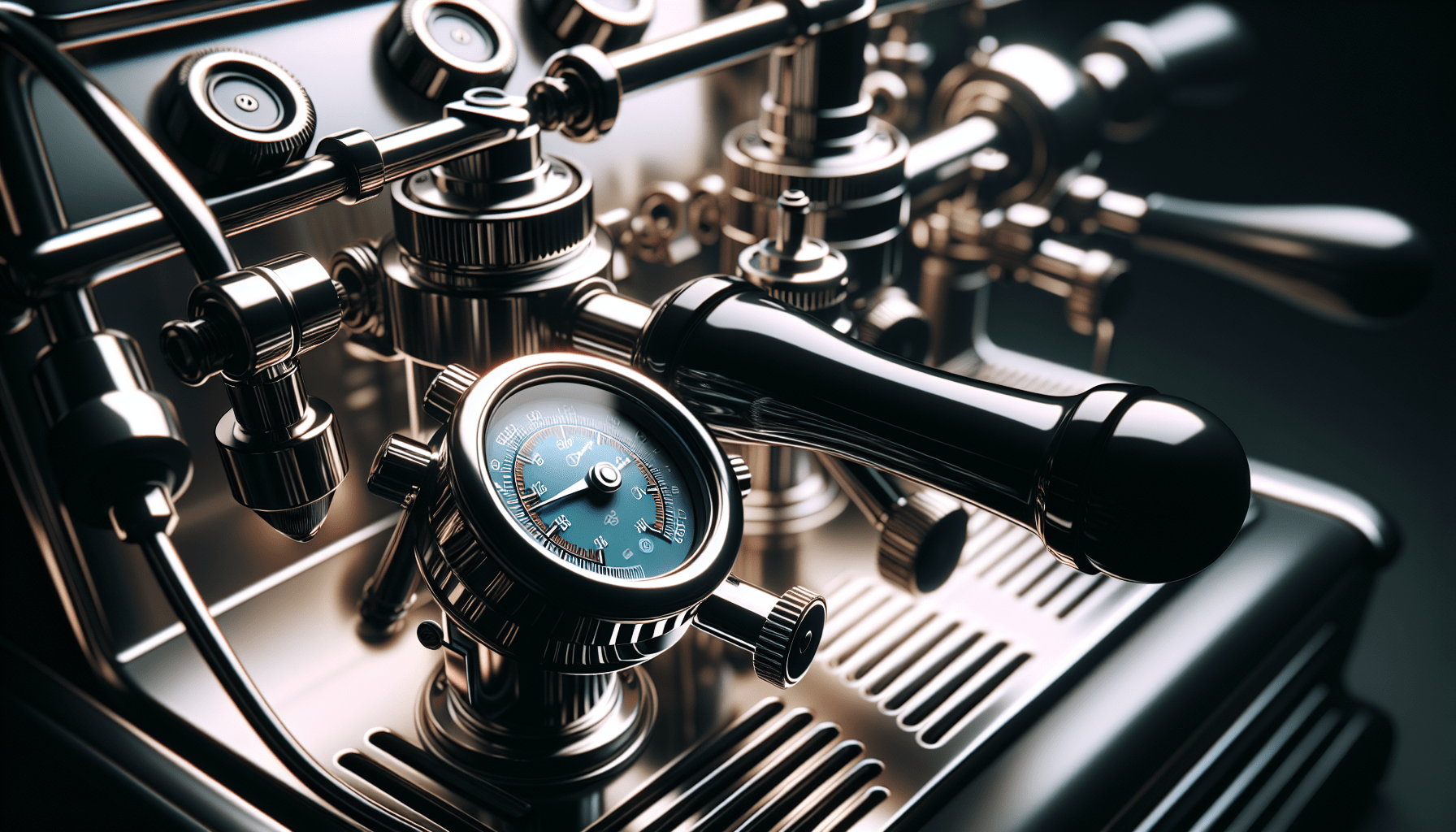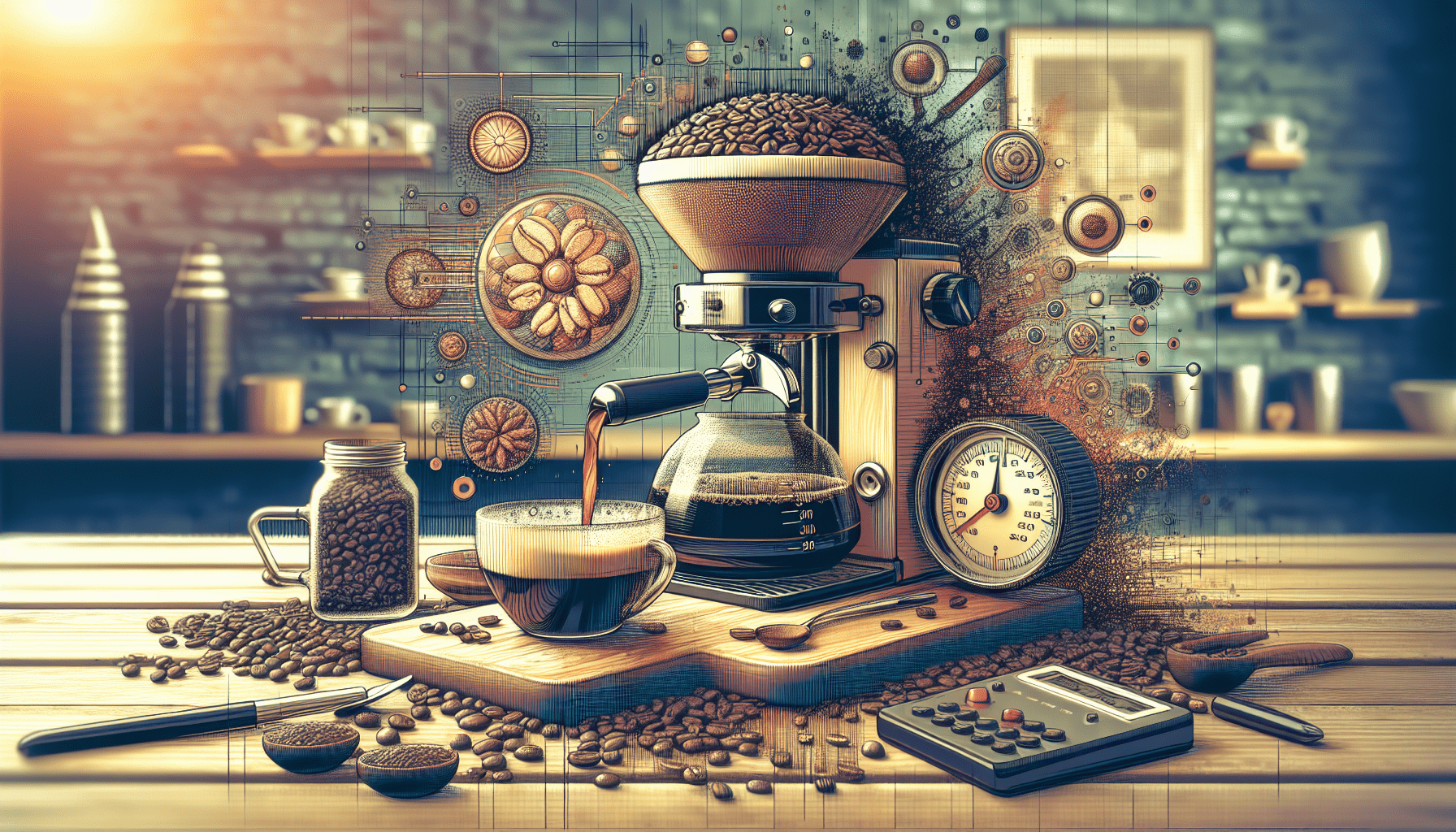If you’re a coffee lover and have been curious about how semi-automatic espresso machines work, one crucial aspect to understand is their boiler capacity. This feature determines how much water the machine can hold and heat up for brewing espresso. In this article, we’ll explore the importance of boiler capacity, how it affects the espresso-making process, and why it matters in achieving that perfect cup of joe. So, grab your favorite mug, and let’s dive into the fascinating world of understanding the boiler capacity of semi-automatic espresso machines.
Understanding the Boiler Capacity of Semi-Automatic Espresso Machines
Introduction to Boiler Capacity
When it comes to making a delicious cup of espresso, the boiler capacity of a semi-automatic espresso machine plays a crucial role. The boiler is responsible for heating the water needed for brewing and steaming, making it an essential component of the machine. Understanding the boiler capacity and its importance in the espresso-making process is essential for any coffee enthusiast or professional barista.
Definition of Semi-Automatic Espresso Machine
Before delving into the details of boiler capacity, it is important to understand what a semi-automatic espresso machine is. A semi-automatic espresso machine is a type of coffee-making device that requires some manual input from the user. Unlike fully automatic espresso machines, which handle the entire brewing and extraction process automatically, semi-automatic machines allow users to have more control and customization over their coffee.
Importance of Boiler Capacity in Espresso Machines
The boiler capacity in an espresso machine is crucial because it directly affects the machine’s ability to produce quality espresso shots. The size of the boiler determines the volume of water it can hold and heat up efficiently. If the boiler capacity is too small, it may not be able to keep up with demand, resulting in longer heat-up and recovery times. On the other hand, if the boiler capacity is too large, it can lead to unnecessary energy consumption. Finding the right balance in boiler capacity is essential for a consistent and efficient espresso-making process.
Factors Affecting Boiler Capacity
Volume of Water for Brewing Purposes
One significant factor affecting the boiler capacity is the volume of water needed for brewing purposes. Different espresso recipes require various amounts of water, with some individuals preferring a shorter or longer shot. The boiler capacity should be able to accommodate the desired volume of water for brewing without compromising the machine’s overall performance.
Volume of Water for Steaming Purposes
In addition to brewing, espresso machines also need to generate steam for milk frothing and steaming purposes. The volume of water necessary for these tasks adds to the overall demand on the boiler. It is essential to consider the volume of water required for steaming to ensure that the boiler can handle both the brewing and steaming processes effectively.
Heat-up Time
Heat-up time refers to the duration it takes for the boiler to reach the desired temperature. The larger the boiler capacity, the longer it may take for the water to heat up. This can be a disadvantage for users who require a quick espresso fix, as longer heat-up times mean more waiting. Optimal boiler capacity should strike a balance between sufficient water volume and quick heat-up times.
Recovery Time
Recovery time refers to the time it takes for the boiler to reheat the water after a shot is pulled or steam is generated. If the boiler capacity is inadequate, it may take longer for the machine to recover, resulting in a delay between each shot or steam cycle. A sufficient boiler capacity will ensure shorter recovery times, leading to increased productivity and faster coffee preparation.
Determining Optimal Boiler Capacity
Understanding Brewing and Steaming Requirements
To determine the optimal boiler capacity for a semi-automatic espresso machine, it is crucial to understand the brewing and steaming requirements. Consider factors such as the desired volume of each shot, the frequency of steaming, and any customization needed for individual recipes.
Calculating the Total Water Volume Needed
After understanding the specific requirements, calculating the total water volume needed becomes easier. Add up the volume of water required for brewing and steaming, ensuring that the boiler capacity can handle this total amount efficiently. It is also important to account for any additional water losses due to evaporation or wastage during the brewing and steaming processes.
Balancing Heat-up and Recovery Times
Another factor in determining optimal boiler capacity is balancing heat-up and recovery times. If quick heat-up times are a priority, a smaller boiler capacity may be suitable. However, if faster recovery times are necessary, a larger boiler capacity may be required. Consider the specific demands of the users and the environment where the machine will be used to strike the right balance between heat-up and recovery times.
Considering User Demand
The user demand is an essential consideration when determining the optimal boiler capacity of a semi-automatic espresso machine. If the machine is intended for personal use or for a small group of individuals, a smaller boiler capacity may be sufficient. However, for commercial use or high-demand environments, a larger boiler capacity will be necessary to meet the volume requirements.
Different Boiler Capacities in Semi-Automatic Espresso Machines
Small Capacity Boilers
Semi-automatic espresso machines with small capacity boilers typically have a boiler capacity ranging from 200ml to 500ml. These machines are generally suitable for personal use or for small spaces where coffee consumption is lower. Small capacity boilers are often found in entry-level or compact espresso machines that prioritize space-saving design and convenience.
Medium Capacity Boilers
Medium capacity boilers in semi-automatic espresso machines usually have a capacity ranging from 600ml to 1 liter. These machines are versatile and suitable for a wider range of users, including home users and small coffee shops. Medium capacity boilers strike a balance between space efficiency and the ability to handle moderate coffee demands.
Large Capacity Boilers
Semi-automatic espresso machines with large capacity boilers typically have a capacity ranging from 1.2 liters to 3 liters or more. These machines are designed for high-demand commercial environments, such as busy coffee shops or restaurants. The larger boiler capacity ensures that the machine can consistently produce espresso shots and steam milk without experiencing significant delays.
Advantages and Disadvantages of Different Boiler Capacities
Advantages of Small Capacity Boilers
- Compact design, suitable for limited counter space.
- Quick heat-up times due to smaller water volume.
- Lower energy consumption.
Disadvantages of Small Capacity Boilers
- Limited capacity for brewing and steaming.
- Longer recovery times due to smaller water volume.
- Not ideal for high-demand environments.
Advantages of Medium Capacity Boilers
- Versatile for both personal and small commercial use.
- Faster heat-up and recovery times compared to smaller boilers.
- Sufficient capacity for moderate coffee demands.
Disadvantages of Medium Capacity Boilers
- May not handle high-demand environments efficiently.
- Limited capacity for simultaneous brewing and steaming.
Advantages of Large Capacity Boilers
- Suitable for high-demand commercial environments.
- Consistent performance with minimal delays.
- Ample capacity for simultaneous brewing and steaming.
Disadvantages of Large Capacity Boilers
- Takes up more space due to larger size.
- Longer heat-up times due to larger water volume.
- Higher energy consumption.
Maintenance and Care for Boiler Capacity
Regular Cleaning
To maintain and care for the boiler capacity in a semi-automatic espresso machine, regular cleaning is crucial. Follow the manufacturer’s instructions for cleaning the boiler, ensuring that any built-up residues or deposits are removed. Regular cleaning helps prolong the life of the boiler and ensures optimal performance.
Descale Routine
Descaling is another important aspect of maintaining boiler capacity. Over time, mineral deposits can accumulate inside the boiler, affecting its heating efficiency. Follow the manufacturer’s recommended descale routine to remove these deposits and keep the boiler functioning properly.
Water Quality Management
Water quality also plays a significant role in maintaining the boiler capacity. Hard water can lead to mineral buildup, affecting the heat transfer efficiency and overall performance of the boiler. Using filtered water or a water softener system can help reduce mineral deposits and prolong the life of the boiler.
Effect of Boiler Capacity on Espresso Quality
Temperature Stability
The boiler capacity directly influences temperature stability, which is crucial for brewing espresso. Small boilers may experience temperature fluctuations more frequently, resulting in inconsistent shot quality. Larger boilers, on the other hand, have a higher water volume, leading to better temperature stability and more consistent extraction.
Consistency of Brewing
A sufficient boiler capacity ensures the consistency of brewing by providing a consistent water supply. With the right boiler capacity, espresso shots can be extracted evenly, allowing for consistent taste and quality. In contrast, insufficient boiler capacity may result in uneven extraction and variations in the final cup.
Ability to Handle High Volume
For espresso machines intended for commercial use or high-volume environments, a larger boiler capacity is essential. A larger boiler can handle the demand for continuous brewing and steaming, ensuring that the machine can keep up with the pace without compromising quality. Machines with smaller boiler capacities may struggle to handle the high volume, resulting in longer wait times and decreased efficiency.
Comparing Boiler Capacity with Other Espresso Machine Features
Pump Pressure
While boiler capacity is important, it is not the only factor to consider when selecting a semi-automatic espresso machine. Pump pressure plays a crucial role in extraction, and the right combination of pump pressure and boiler capacity is necessary for optimal results. The pump pressure ensures proper water flow through the coffee grounds, while the boiler capacity provides the water volume needed for brewing and steaming.
Boiler Material
Boiler material can also affect the performance and longevity of the espresso machine. Common materials used for boilers include stainless steel and copper. Stainless steel boilers are known for their durability and resistance to corrosion, while copper boilers offer excellent heat conductivity. Consider the advantages and disadvantages of various boiler materials when making a purchasing decision.
Grouphead Design
The grouphead is the component where the espresso is extracted, and the design of the grouphead can impact the quality of the shot. Different machines may have different grouphead designs, such as E61 or proprietary designs. While boiler capacity is important, also consider the quality and performance of the grouphead when choosing a semi-automatic espresso machine.
Considerations when Choosing a Semi-Automatic Espresso Machine
User Skill Level
Consider the skill level of the users who will be operating the espresso machine. Some machines may have more manual controls and require more expertise, while others may have more automated features for beginners. Choose a machine that suits the skill level and experience of the users.
Brewing and Steaming Needs
Evaluate the specific brewing and steaming needs to determine the optimal boiler capacity. Consider the desired volume of each shot, the frequency of steam, and any additional customization required. Ensure that the chosen machine has a boiler capacity that can meet these requirements.
Budget Constraints
Budget is always an important factor when purchasing an espresso machine. Determine a budget range and look for machines within that range that offer the desired boiler capacity and essential features. Remember that investing in a higher-quality machine may result in better longevity and performance in the long run.
Space Availability
Consider the available space for the espresso machine. Smaller capacity boilers may be more suitable for limited counter space, while larger capacity boilers require more room. Measure the available space and choose a machine that fits comfortably without compromising functionality.
Conclusion
The boiler capacity of a semi-automatic espresso machine is a crucial aspect that directly affects the quality and efficiency of the espresso-making process. By understanding the factors that influence boiler capacity and considering specific needs, users can choose the optimal boiler capacity that suits their requirements. Whether it is for personal use or in a commercial setting, finding the right balance in boiler capacity ensures a delightful espresso experience with every cup.




